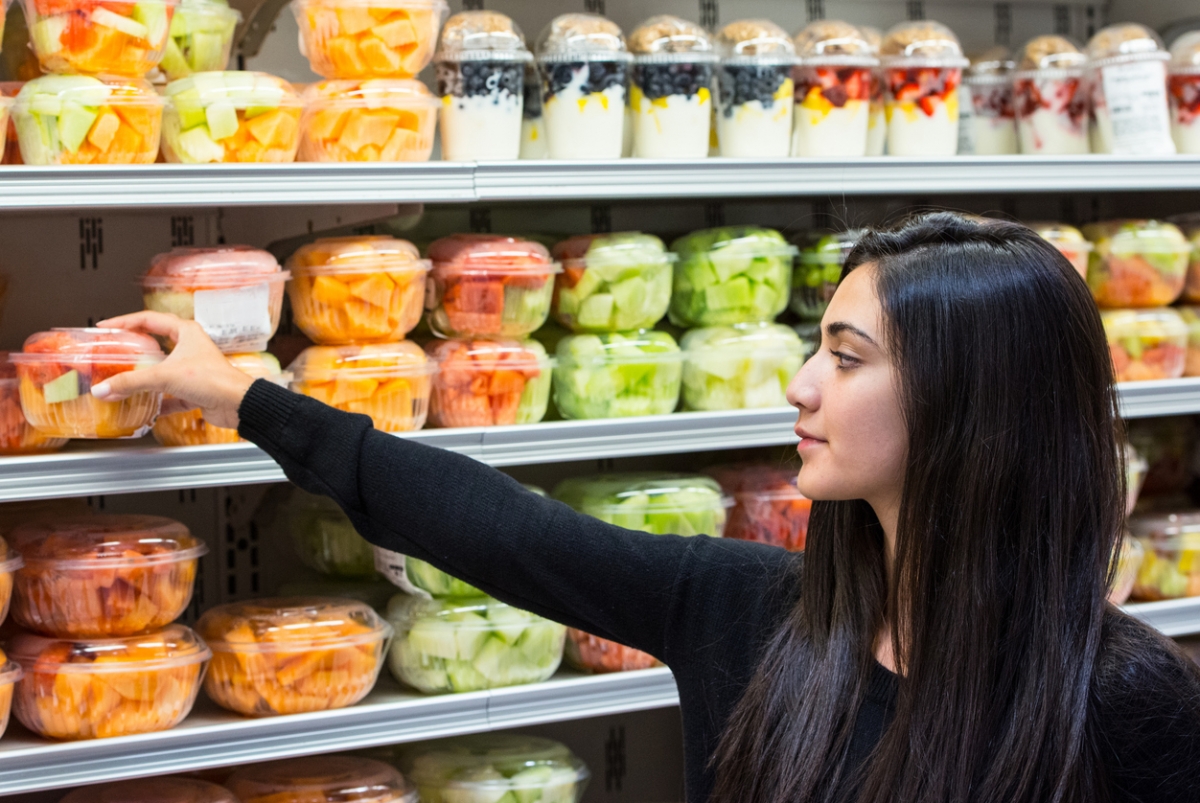Posted on Monday, August 21, 2017
A Grocery Guide for College Students
While college has long been associated with fun and glory, it’s also been proven time and time again as a critical development stage in young adults. The patterns that college students establish in terms of love, work, and play largely become the patterns they keep for the majority of their lives, as established by psychologists such as Dr. Meg Jay (author of the bestselling “The Defining Decade: Why Your Twenties Matter—And How to Make the Most of Them”). This idea fits with why students not only learn about their career fields in college, but also skills of professionalism, whether that means showing up to classes on time to composing mature emails. Essentially, pathways in the brain become much more solidified after 30, which is why college is the ideal time to groom pathways of professionalism (rather than partying).

Groceries play a small but significant role in this stage. Many new college students have enjoyed their parents cooking for the majority of their lives, which can leave them slightly unprepared doing their own grocery shopping and cooking. Universities have largely addressed this issue by offering wonderful meal plans and dining halls, but this option can still leave students dependent outside of college. Meal plans and dining halls might be replaced with fast food and credit cards once a student graduates.
The point is, it’s good to practice habits of independence, especially when living in a dorm. Start now, and these skills can potentially carry a student through the years from campus and beyond. In regards to groceries, here’s what we suggest:
Make a list and plan ahead
Planning is the master key to independence. There are different types of planning a student can do, but no matter what, she should always have a list when she goes to the store. Usually grocery lists are based on meal plans for the week, which helps prevent the daily stress of wondering what to do for lunch/dinner that day. A list can also keep students from spending money on random items they don’t need, plus it’s less likely they’ll have to make more than one trip out for food. Lastly, a list can help a student distinguish the necessities from the luxuries. Put the most-needed things at the top of the list (fruits, veggies, grains, etc), and save the luxuries for the bottom if there’s money leftover (snacks, desserts, sodas, etc). P.S. – Parents, send your student off with a gift card for groceries and gas!
Plan according to sales
This strategy is particularly ideal for a college student budget. Find a weekly ad and/or sign up for weekly coupons, and then plan your shopping around the offers. A Stouffer’s Lasagna is $2 off this week? That can be dinner for Tuesday night. Some people might even find this kind of planning helpful in making decisions. It’s easy to get overwhelmed in the meal planning (do I want ______ or ______ or ______ or ______ or ______ or…?), so when you’re limited to choosing things on sale, it takes some of the pressure off.
Plan according to practicality
Typically, the only “kitchen” a dorm room includes is a microwave and mini fridge. While this means you won’t be fixing filet mignon any time soon, there are still plenty of ways to be creative:
- Some in-room breakfast options can include instant oatmeal, cereal, or a mix of granola and yogurt—all of which can be loaded with things like fresh fruit, honey, or cinnamon.
- For lunch, you can keep it classic with sandwiches or make a microwavable quesadilla (with a side of chips and salsa!)
- While Ramen noodles, Easy Mac, and Bagel Bites are traditional favorites, another convenient (and healthy!) dinner option is to pair a pre-cooked chicken with some frozen vegetables and instant brown rice. And when the weather is colder, there are many different great soups to try. (Read more: Cooking with Kate: It’s Always Soup Weather)
- Don’t forget about non-food needs such as utensils, plates, cups, napkins, Tupperware containers, and more. Disposable items are always an option, but if your dorm room has a sink, consider using dishes you can wash and reuse (plus it saves money). Just be careful to not clog your sink with food!
Plan according to nutrition
Patterns of health are established in college as well, which means it's important to consider the nutritional values of your food. This type of planning is perhaps most important when it comes to buying snacks because that’s when most of us want to over-indulge. If nutritional value isn’t enough motivation, consider that healthy snacks (namely produce) are also often cheaper per serving than most unhealthy snacks, plus they’re versatile. For example, bananas can be eaten with cereal, peanut butter, or even with ice cream as a banana split. Some other great nutritional snacks include:

Refrigerated items:
- Apples
- Carrots
- Cheese sticks
- Cherry tomatoes
- Grapes
- Hummus
- Oranges
- Sugar Snap peas
- Cottage cheese
(Read more: Cottage Cheese Perfect Pairings)
Non-refrigerated:
- Crackers
- Dried fruit
- Gold Fish
- Pretzels
- Trail mix
- Microwave popcorn
(Read more: Three Fun Popcorn Recipes)
Visit a local Brookshire Brothers to get started today!

